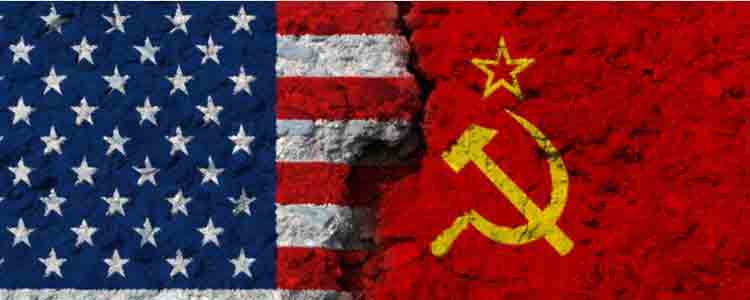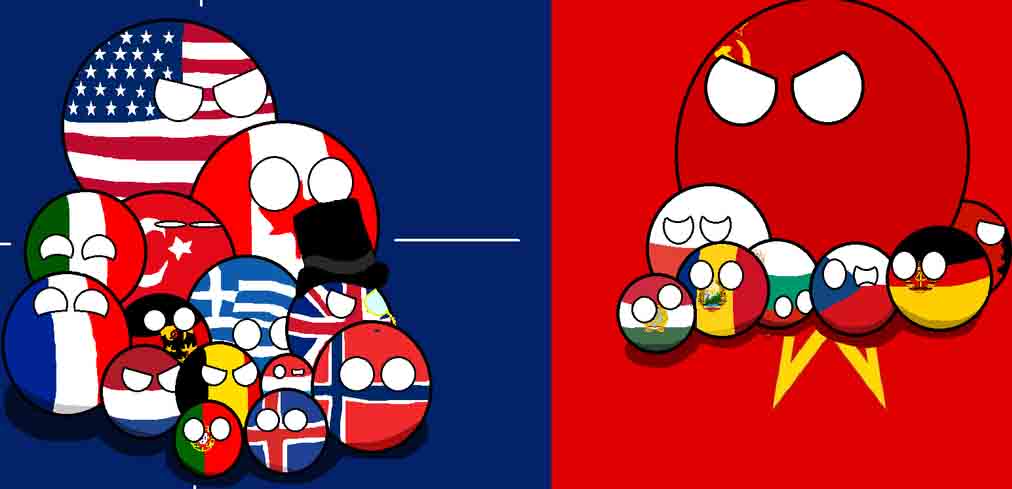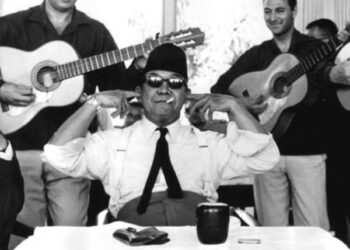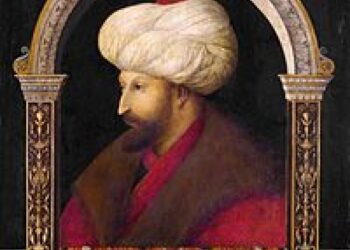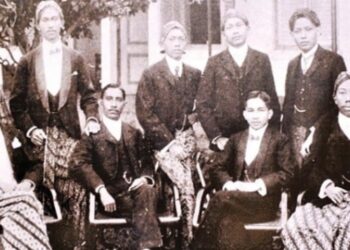The history of the Cold War – The Cold War was a tension that seemed politically hostile to each other due to a rivalry of interests. The Cold War began after the end of World War II from the division of Germany into two regions, West and East Germany. The division of Germany into 2 was followed by the division of Berlin into West Berlin controlled by the United States, England and France while East Berlin was occupied by the Soviet Union precisely during the Yalta Conference (February 1945).
In a short time (1945-1948) the Soviet Union successfully established communist governments in Bulgaria, Romania, Hungary, Poland, and Chekoslovakia. Because of the rapid development of Soviet influence and its rapid growth, America felt the need to stem the development of the communist movement. Until finally America devised a containment policy political strategy aimed at preventing the development of influence of a country or a political system from the opposing side. The political strategy was developed through the provision of economic and military assistance such as the Marshall Plan and the Truman Doctrine, which was financial, military, and military advisory assistance to Greece and Turkey to confront communist guerrillas. The goal was to defend Greece and Turkey from communist insanization and hinder the Soviet Union’s path to the south that would threaten Western countries. For if one country falls then the other neighboring country will also fall so that all countries will fall into communist influence. The Soviet Union sought to rival this by creating the Molotov Plan with the aim of reorganize the economies of Eastern European countries and the Cominteren Economic Cooperation Agency. The ideological conflict is growing in Asia.
During the Cold War, the situation and conditions of the world were accompanied by the following activities:
1) Scramble Hegemony or Power
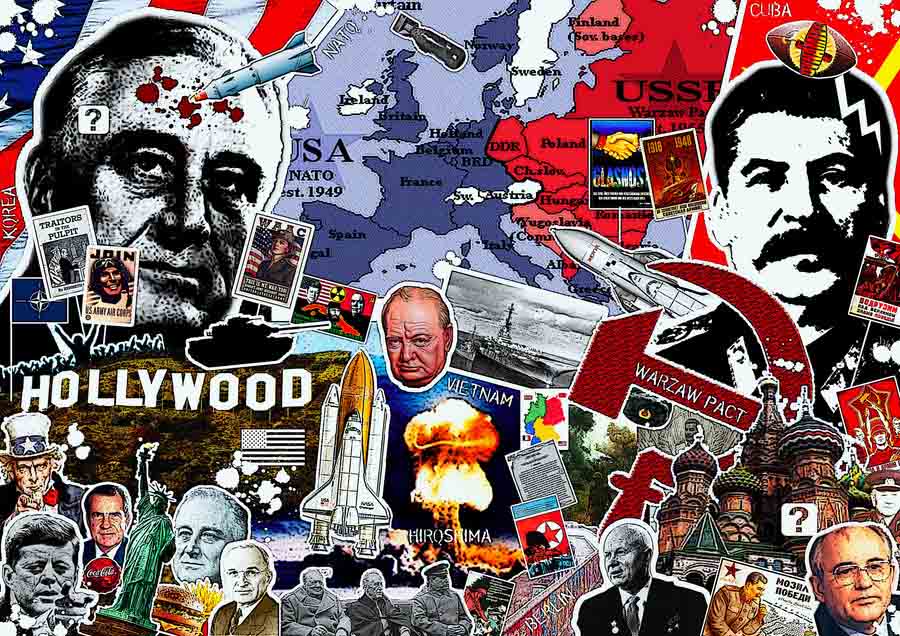
2. Based on the Yalta Conference, the Korean peninsula was divided into two, namely the North under the rule of the Soviet Union so that Kim Il Sung ran the government to basis of communist thought. Meanwhile in the south, America chose Rhee Syngman as a person who runs a government based on democratic principles. Because of these ideological differences, it led to the civil war on the Korean Peninsula on June 25, 1950 and this was the turning point of the Cold War.
3. The position of communism in China grew stronger due to the help of weapons from the Soviet Union originating from Japan. The strength of communism in China led to the development of communism in Southeast Asia. China seeks to deter imperialism propaganda carried out by the United States and Britain. China is increasingly developing its communism as the reason is due to the desire to restore Chinese territory in ancient times including Korea, Funan, Burma, India, even further including areas in Southeast Asia. In addition to historical reasons there are also geographical reasons and natural wealth in Southeast Asia to strengthen its economic position in the international world. For this reason, China is increasingly involved in Southeast Asia.
4. What China and the Soviet Union did was increasingly life-threatening in Southeast Asia. This became a serious enough problem for the United States to make America feel the need to help Southeast Asian countries. The Americans eventually decided to help the Then-Warring French against Vietnam (aided by the Soviet Union and the PRC) in the hope that Vietnam would not fall into communist hands. But it turned out that Vietnam won and automatically Vietnam came under communist rule.
5. Vietnam’s fall into communist rule allowed countries in Southeast Asia to fall to communist rule. The Geneva Agreement was an attempt to end the conflict between communists and non-communists that divided Vietnam into two, namely North and South Vietnam. But these efforts did not come to fruition and did not bring satisfaction to end the conflict in Vietnam. The conflict led to the involvement of foreign interference. North Vietnam as a communist country got help and influence from China and the Soviet Union while South Vietnam as a democratic country got help from the United States.
6. After years of fighting finally in 1976 Vietnam could be united under communist rule. Vietnam formed an Indochinese union named the Indochinese Federation under communist rule that posed a military and ideological threat to Southeast Asian countries.
7. In Southeast Asia, there is a rivalry between the community and the conflict between Vietnam and Cambodia on the border issue. On this issue, Cambodia (Pol Pot) rejected the proposal to resolve the border conflict through a UN forum. Behind the Cambodia-Soviet problem is not separated from the political problem that is the Sino-Soviet conflict. Behind Cambodia stood China and on the Vietnamese side, there was the Soviet Union. The Vietnam and Cambodia conflicts were a distant match between China and the Soviet Union in Southeast Asia while Vietnam and Cambodia were pawns fighting on the battlefield.
8. Ideological disagreements between the United States and the Soviet Union occurred also in America where Cuban President Fidel Castro founded the communist state in Cuba. This action certainly received a backlash from the United States with an attempt to sponsor the invasion of Cuba’s anti-communist movement but failed. This cold war tension point occurred in the Bay of Pigs in 1961.
9. Other Central American countries such as Nicaragua were also ruled by communists. Where Nicaragua from 1970 to 1990 was controlled by the Sandinista Communist Guerrilla group (Sandinista National Liberation Front).
10. In Africa, the left-wing military had controlled the government in Ethiopia between 1974-1991. The socialist system of government made the country allied with the Soviet Union. In Angola and Mozambique from 1975-1990 Marxist-Leninist guerrilla groups controlled the government.
11. In Afghanistan (1978) Noor Mohammad Tariki’s communist-led government succeeded in establishing Daoud Khan through a bloody coup. To save the communist regime in Afghanistan, which at the time received resistance from Hafizullah Amin’s leadership group, the Soviet Union in December 1979 carried out a military invasion of Afghanistan. In addition to counterbalance the armed forces of the United States in Southwest Asia and the influence of its liberalism. But the invasion received resistance from the Mujahideen group led by Mohammad Najibullah who eventually managed to res fight back Soviet forces and in 1989 Soviet forces withdrew from Afghanistan.
During the Cold War, the two superpowers were never directly involved in open conflict. They are always behind the countries in dispute. They provide weapons assistance and meet the living needs of the people of disputed countries.
2) Alliance System
When the cold war peaked, every conflicting country sought to strengthen itself by joining an alliance. The form of alliance system by both the Eastern bloc and the Western bloc is as follows:
1. Establishment of Cominform (The Communist Information Bureau) in 1947. Cominform is a forum for the cooperation of European communist parties based in Belgrade, Yugoslavia.
2. Establishment of NATO (North Atlantic Treaty Organization) April 4, 1949. The countries that are members are the United Kingdom, Ireland, Iceland, Norway, Denmark, Belgium, the Netherlands, Luxembourg, France, Portugal, Canada, and the United States. The goal was to stem communists from Northern Europe to Turkey and Greece.
3. Establishment of the Warsaw Pact in 1955 with the countries of East Germany, Czechoslovakia, Hungary, Bulgaria, Poland, Romania, and Albania. The Warsaw Pact was a defense and security cooperation of communist countries.
4. The 1950 treaty between the PRC and the Soviet Union on cooperation between the two countries to deal with possible Japanese aggression.
5. Establishment of the ANZUS Pact (Australia, New Zealand, and the United State), namely the defense pact of the countries of the United States, Australia, and New Zealand in 1951.
6. Establishment of SEATO (South East Asia Treaty Organization) in 1954. SEATO is defense cooperation between Southeast Asian countries and the West. With members including the United States, United Kingdom, France, Philippines, Singapore, and New Zealand.
3) Espionage Activities
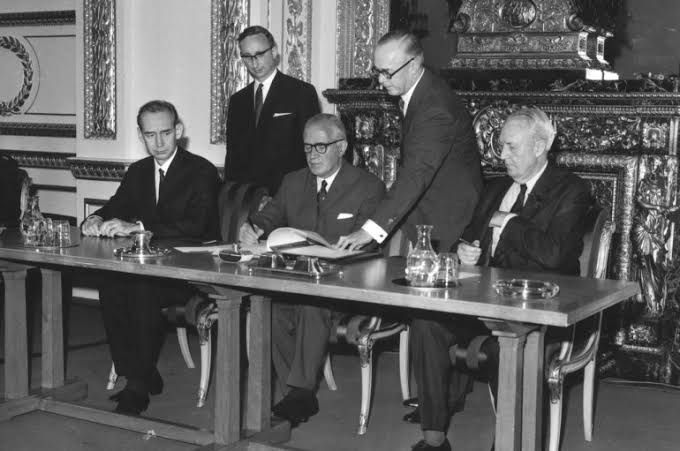
Espionage activities are reflected in the actions carried out by espionage agencies on both sides, namely between the KGB and the CIA. The KGB (Komitet Gusudarstvennoy Bezopasnosti) is a Civil Intelligence Service or Secret Service of the Soviet Union while the CIA (Central Intelligence Agency) which is the Secret Service of the United States is tasked with seeking information about certain foreign countries.
The KGB and CIA always strive to obtain confidential information on matters concerning both parties or countries under the influence of both parties. They also helped create tensions in the world. For example, the CIA helped Cubans overseas to carry out an attack on Cuba in 1961 called the Bay of Pigs Incident. On the other hand, the Soviet Union gave support to Fidel Castro (President of Cuba) in the face of the invasion.
4) Armament and Space Technology Competition
The cold war between the two superpowers was marked by the balancing of nuclear arsenals and military personnel. So this activity is referred to as the politics of Balance of Power. The two superpowers’ show of strength followed a race in military and space technology in which the two showed sophistication.
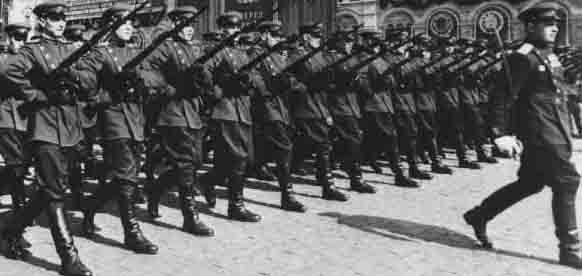
Both blocs built nuclear weapons launch button centers of various countries under its influence. To reduce the increasing nuclear arms race on both sides, the United Nations established an Atomic Energy Commission aimed at finding ways and ways to develop the use of atomic power for peaceful purposes and prevent its use for war purposes. In late December 1946, the commission agreed to conduct strict supervision and arrangements to prevent the secret production of atomic weapons. But the Soviet Union objected and proposed a complete reduction of weapons. While the US disagreed, it eventually vetoed the US proposal at a Security Council hearing. In 1949, the US conducted its first atomic bomb test. That was responded to by the creation of a hydrogen bomb by the US that was tested in November 1952, although it turned out that the US could already make its hydrogen bomb.
Until 1983, the comparison of the power of nuclear weapons of the Soviet Union showed a superior position compared to the power of the United States.


